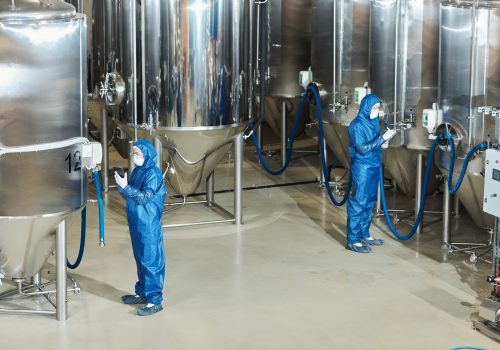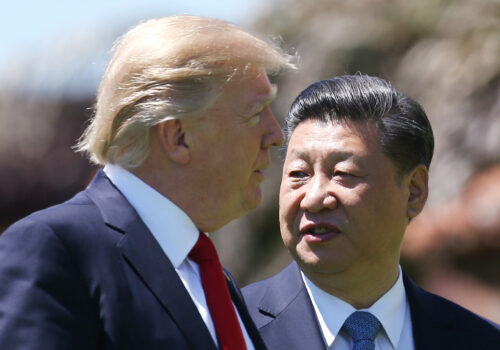Pharmaceuticals are China’s next trade weapon
Last week, the Trump administration struck a one-year truce with China to release its chokehold over US rare earth imports.
However, Beijing holds dry powder it has not yet deployed. China supplies most critical drug ingredients to the United States and ranks as the nation’s second largest source of finished critical pharmaceuticals. Despite deep distrust, US dependence on Chinese pharmaceuticals is growing.
The Trump administration’s ongoing investigation into pharmaceutical supply chain risks could reduce this dependence. Yet the one-year trade truce may delay implementation. And tariffs alone will not work. A third of generic active pharmaceutical ingredients (APIs) come from sole suppliers—many of which are in China. Without competition, these monopolists will raise prices rather than relocate. Washington must use the next year to negotiate pharmaceutical sector trade deals, replicating its critical minerals approach.
China’s pharmaceutical monopoly
China is the United States’ largest foreign supplier of critical pharmaceutical inputs by volume (39.9 percent of imports in 2024) and second largest source by value (16.8 percent). China employs distortive policies to achieve dominance across APIs, key starting materials (KSMs), and auxiliary chemicals. In 2008, Beijing designated pharmaceuticals a “high-value-added industry” and established subsidies and export incentives. Lax environmental protections and the world’s largest chemical industry have also let Chinese manufacturers undercut global competitors.
China holds near-monopoly control over certain critical pharmaceutical ingredients. One in four imported drug inputs comes from product categories where China controls at least three-quarters of US imports. For one in ten critical inputs, China’s market share exceeds 99 percent. The API for sulfonamide-class antibiotics—used to treat type 2 diabetes, high blood pressure, and HIV/AIDS—exemplifies this dependence, with nearly all US imports originating from China.
Chinese firms are even more dominant in the upstream components for APIs. Forty-one percent of key starting materials—the chemical building blocks used for API synthesis—come from China. China controls critical KSMs for major drug categories, including antibiotics. China also holds near-monopolies on essential auxiliary chemicals, including reagents and solvents for API synthesis. These upstream concentrations create obscure risks. Focusing on API suppliers while ignoring KSM and auxiliaries is like tracking bullet manufacturers while ignoring gunpowder suppliers.
Finished pharmaceuticals tell a similar story. While Mexico is the United States’ largest supplier by volume, China remains a key source of generics and bandages. In 2024, the United States relied on China for 99 percent of imported prednisone, a powerful anti-inflammatory; 92 percent of penicillin and streptomycin antibiotics; and 94 percent of first aid kits.
The risk extends to research and development. Beijing is building a formidable drug discovery engine by designating pharmaceuticals a strategic industry, showering the sector with state support. The results show in drug development pipelines. China leads the world in clinical trial starts and, in 2024, large pharmaceutical companies sourced nearly a third of external drug candidates from China. While China’s portfolio remains overweighted toward “me-too” molecules—refined versions of existing drugs—Beijing is prioritizing original, first-in-class (FIC) drugs. In 2024, China accounted for 24 percent of the world’s FIC drug pipeline, trailing only the United States.
Three risks from China’s drug dominance
Overreliance on Chinese imports and innovation threatens US public health resilience in three ways: coercion, disruption, and capability loss.
China could leverage control over US drug supply chains during a major geopolitical conflict, like a trade war. China’s 2020 Export-Control Law and 2021 Biosecurity Law grant broad authority to weaponize pharmaceutical exports. Blanket bans, like the rare earth controls, are unlikely. Even the rare earth restrictions include carveouts for medical use. Still, Beijing could threaten pharmaceutical leverage during trade disputes. More worryingly, China could target the US military. A 2023 Pentagon study found that 27 percent of military drug purchases depend on China. Though unlikely, Chinese pharmaceutical coercion is a “nuclear option.”
Even without deliberate coercion, concentrated Chinese production creates acute vulnerability to accidents and policy shocks. When Shanghai locked down during the COVID-19 pandemic, GE Healthcare’s plant—which supplied 80 percent of the world’s iodinated contrast media—went dark. Hospitals worldwide rationed diagnostic imaging for ten months until production recovered. When a single facility or region controls global supply, any disruption—from disease, natural disaster, or manufacturing failure—can cripple the system.
The third risk extends beyond supply chains to future drug development. As Chinese firms climb the value chain, dependence shifts from manufacturing capacity to innovation capabilities. Last year’s record $41.5 billion in China-to-West licensing, a 66 percent jump from 2023, exacerbates risks of competitive erosion. Drug deals originating in China siphon revenue from US domestic research. Western teams lose essential skills as Chinese partners control trials and scale up for advanced therapies like bispecifics, mRNA, and CAR-T cell therapy. The semiconductor industry offers a stark warning. The United States let chip fabrication move offshore, lost critical process expertise, and is now spending hundreds of billions to rebuild what it surrendered. The pharmaceutical industry cannot repeat this mistake. Sustaining domestic drug discovery ensures the United States maintains technical capabilities for long-term scientific leadership.
Two tools to break China’s grip
Washington needs both protectionist and promotional policies to secure US pharmaceutical supplies. Section 232 tariffs on imports could push some API production out of China. US import rules treat the API source as the drug’s country of origin—even if another country completes final manufacturing. An Indian-made drug using Chinese APIs pays the Chinese tariff rate. Tariffs could be especially potent as China expands domestic manufacturing, dissuading downstream producers in India, Mexico, and the European Union (EU) from integrating Chinese production.
However, tariffs can’t break a monopoly. A third of generic APIs come from sole suppliers, including many across China, which face no competitive pressure to relocate. For many generic drugs, returns on new production facilities are too low and uncertain to bypass China. Firms may instead pass costs on to consumers, cut quality, or discontinue production. Beijing also understands its leverage as the global pharmacy and is defending market share by flooding countries with below-cost exports to cripple alternative suppliers.
These dynamics require promoting domestic and allied production through sectoral trade arrangements. Washington’s recent critical mineral deals provide the template. Joint strategic stockpiles, price-support mechanisms, and targeted financing to accelerate production could strengthen medical trade and supply chain resilience among the EU, India, Mexico, and the United States while reducing their collective dependence on Beijing. Unlike tariffs, which cannot stop intellectual property flows, a pharmaceutical trade arrangement could include incentives to support US and allied research ecosystems.
The United States’ pharmaceutical dependence on China is a critical vulnerability. Beijing controls 40 percent of imported drug ingredients and holds monopolies on essential medicines. A one-year trade truce gives the United States runway to break this dependence. Washington must use that time wisely.
Methodology
Calculating pharmaceutical supply chain market share requires discretion and results in variability across estimates. Similar analysis differs in the unit of measurement; conflicting definitions of finished doses, APIs, KSMs, and other inputs; blending of up and downstream products; and extrapolations or mischaracterizations of China’s role in Indian supply chains. For a detailed analysis of the implications of different analytical choices, see Marta E. Wosińska and Yihan Shi’s Brookings paper surveying different estimates of US drug supply chain exposure to China.
This piece relied on the US Department of Commerce’s list of critical goods and materials to define inputs and final goods. Commerce defined inputs to include APIs, KSMs, auxiliary chemicals, and other feedstock essential to pharmaceutical production. Final goods included drugs, vitamins and supplements, and medical supplies. Notably, the Commerce Department’s list of critical final pharmaceuticals excludes certain, finished pharmaceutical products. For all pharmaceuticals (defined as HS 30), China’s share of US imports in 2024 was 13 percent by volume and 4 percent by value.
Unless otherwise noted, calculations were based on the author’s analysis of the Commerce Department’s list and US trade data regarding volume of trade. Volume-based exposure better captures supply risk because Americans mostly use cheap generic options, not expensive branded drugs.
Niels Graham is a contributor at the Atlantic Council and former policy analyst at the US-China Economic and Security Review Commission. He previously served as an associate director at the Atlantic Council GeoEconomics Center.

At the intersection of economics, finance, and foreign policy, the GeoEconomics Center is a translation hub with the goal of helping shape a better global economic future.
Further reading
Wed, Aug 27, 2025
The US-EU face-off over pharma is on pause—for now
New Atlanticist By Emma Nix
Both Europe and the United States would benefit from working together to secure affordable and accessible pharmaceutical supply chains.
Thu, Apr 20, 2023
The US is relying more on China for pharmaceuticals—and vice versa
Econographics By Niels Graham
US China trade of pharmaceutical and active pharmaceutical ingredient (API) is rapidly increasing. Supply chain mapping will be key to risk management
Sun, Oct 12, 2025
As the trade war resumes, China may be keeping one eye on Trump and one on the Supreme Court
New Atlanticist By Josh Lipsky
The US president’s leverage with Xi Jinping could be undercut by the Supreme Court's deliberations.



